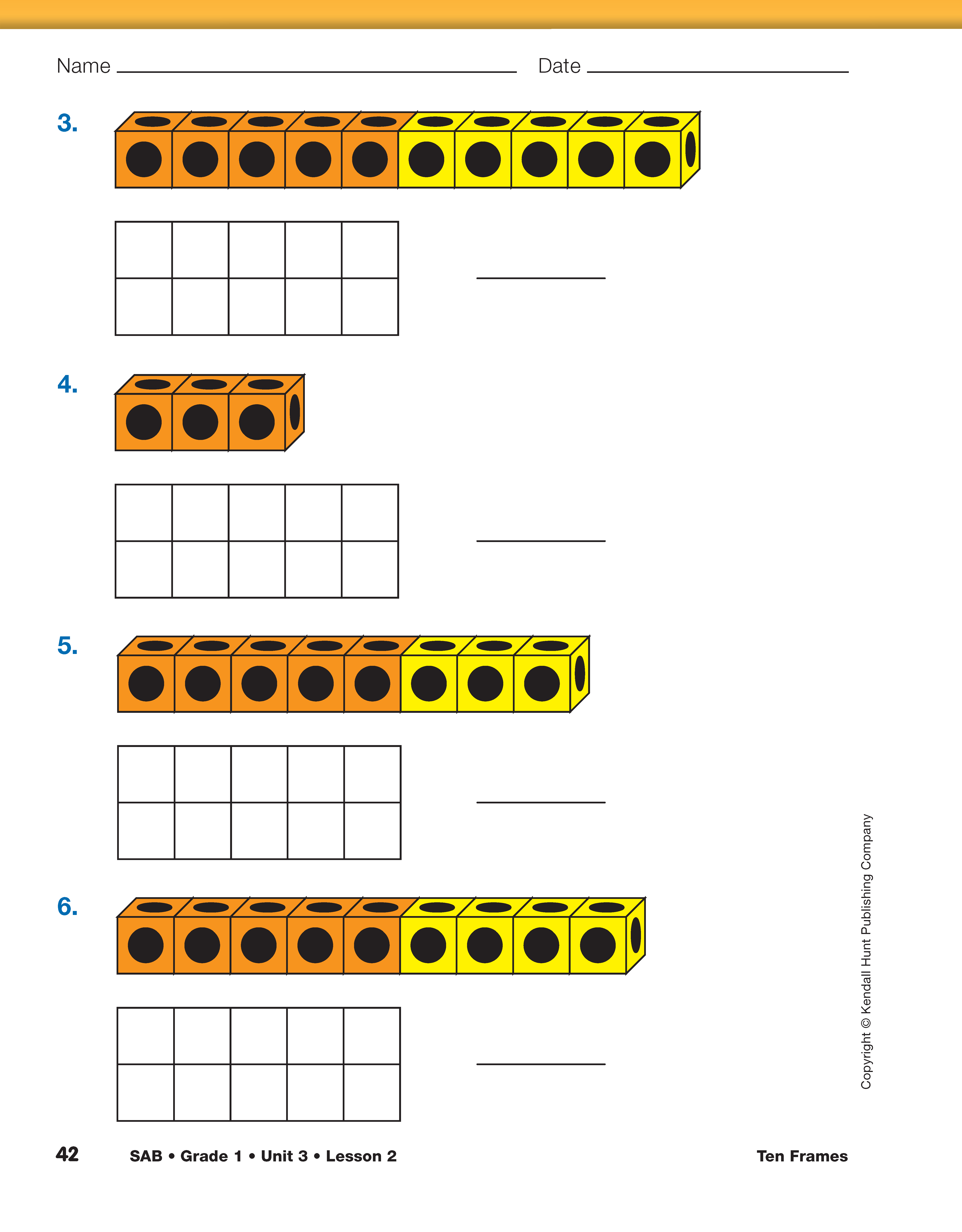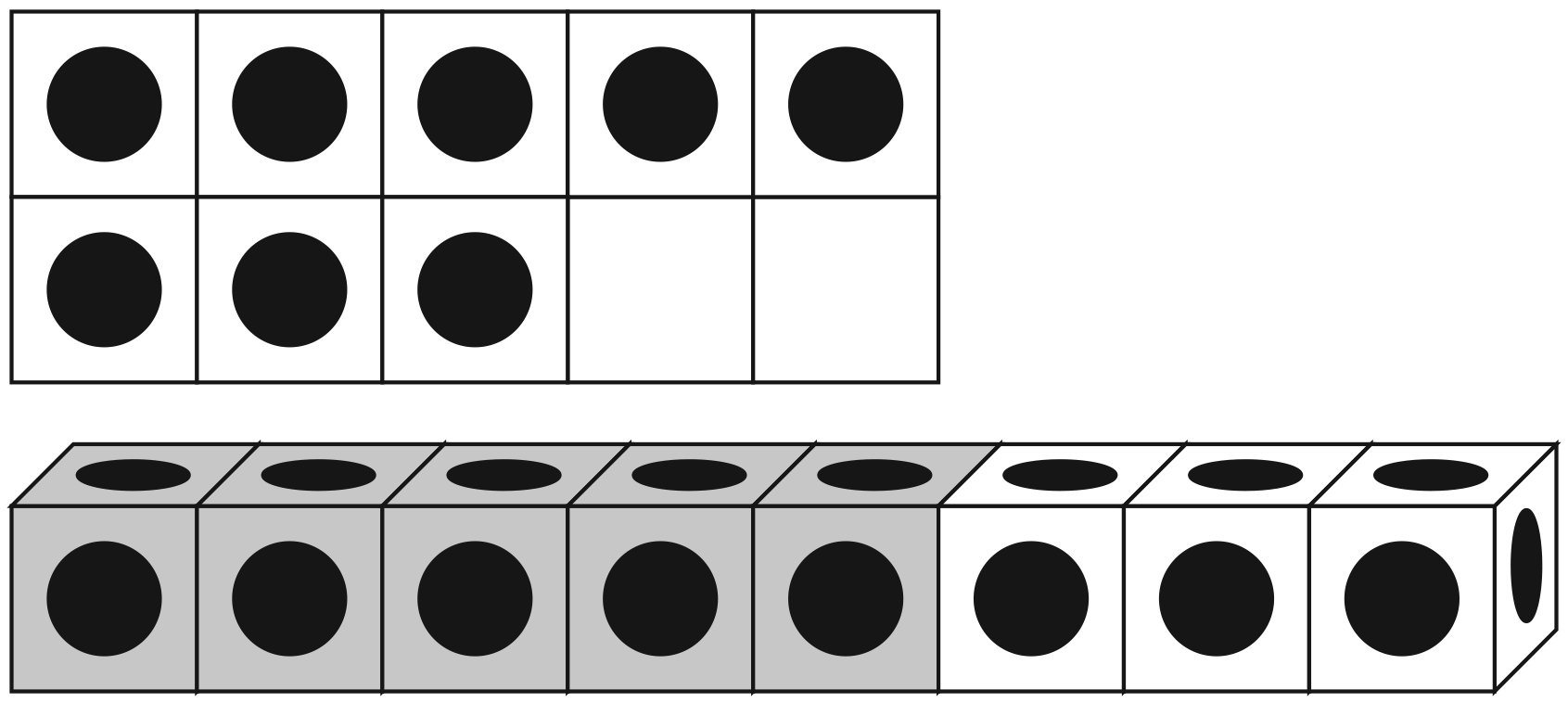Ten Frames
Est. Class Sessions: 2Developing the Lesson
Part 2: Working with Ten Frames 0–10
Show Six to Ten. Demonstrate placing ten counters in a ten frame using a display of the Two Ten Frames Master. See Sample Dialog 2 for a sample classroom discussion which has been adapted from classroom videos. Ask students to count as you fill the ten frame to five. Then place one additional counter on the ten frame as students count on with you as done previously.
When six spaces are filled ask:
Use discussion prompts similar to the following as you continue in the same fashion for each number seven through ten.
Use Cubes and Ten Frames. After students are comfortable with numbers up to ten, ask a volunteer to show a number on the ten frame. Ask the class to build a train with the same number of cubes as counters on the ten frame. Encourage students to use two colors: one color for the number in the top row and a different color for the number in the bottom row. See Figure 2. Discuss connections to five and ten for each number.
Ask students to complete the Cubes and Ten Frames pages in the Student Activity Book. Remind students to fill in the ten frames from left to right, filling the top row completely first. Students may choose to fill the ten frames with Xs or dots.


















